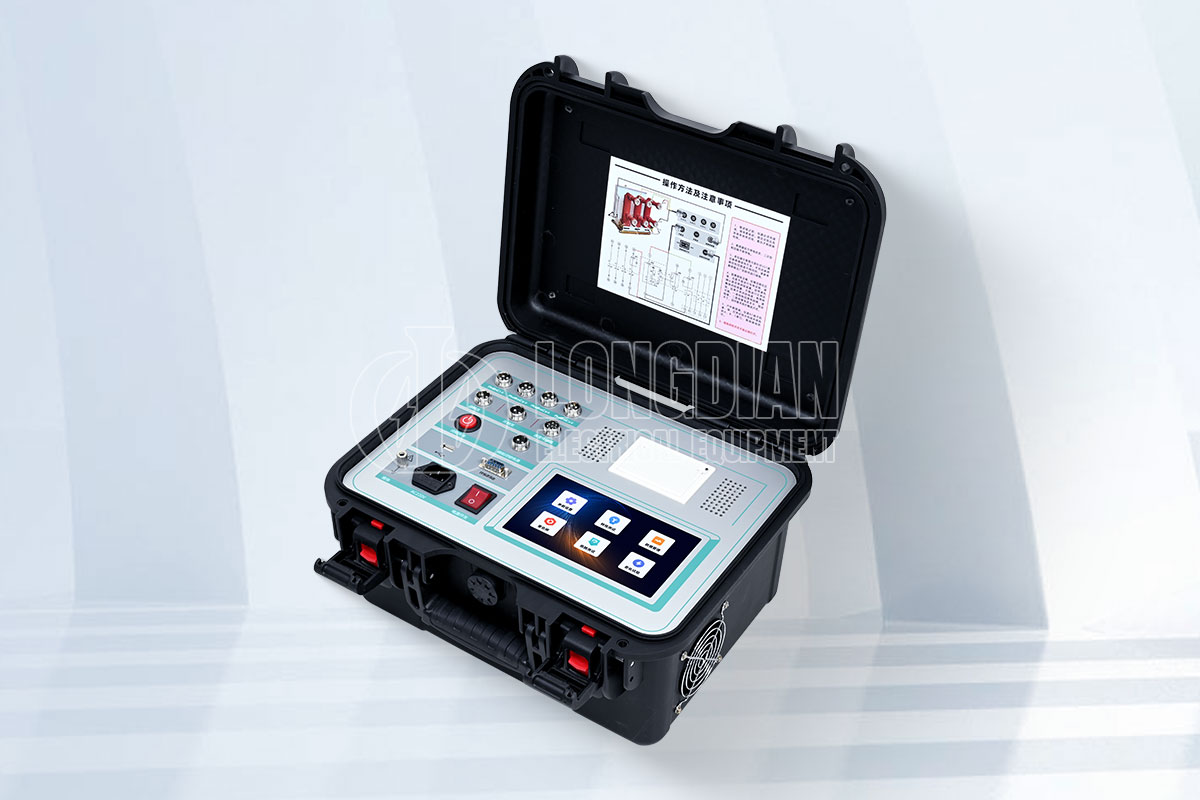Data:2025-02-06 09:31:46Views:1279

Cable Fault Tester - High Voltage Switch Tester - Consultation Tel: 130-3714-0838
High-voltage switches are important control and protection equipment in power systems, and their performance directly affects the safety and stable operation of power grids. In order to ensure the reliability of high-voltage switches, high-voltage switch characteristic testers are widely used in the detection and analysis of their mechanical characteristics. Mechanical characteristics are one of the core indicators of high-voltage switch performance, covering various action parameters of the switch during the opening and closing process.

The test of mechanical characteristics by high-voltage switch characteristic testers mainly includes the following aspects:
① Opening and closing time
The opening and closing time refers to the time from when the switch receives the opening or closing command to when the switch actually completes the action. The tester measures whether this time meets the design standard through the high-precision timing function. Too long opening and closing time may cause the switch to fail to cut off the fault current in time, affecting system safety.
② Opening and closing speed
The opening and closing speed refers to the movement speed of the switch moving contact during the opening or closing process. The tester records the movement trajectory of the moving contact through the sensor and calculates its average speed and maximum speed. Too fast or too slow speed may affect the mechanical life and electrical performance of the switch.
③ Stroke characteristics
The stroke characteristics refer to the movement distance of the switch moving contact during the opening and closing process. The tester measures the actual stroke of the moving contact through a displacement sensor to ensure that it is within the design range. Insufficient stroke may cause poor contact of the contact, while excessive stroke may cause mechanical damage.
④ Synchronicity
Synchronicity refers to the consistency of the opening and closing time of each phase of the three-phase switch. The tester uses the multi-channel measurement function to detect the time difference of each phase to ensure the synchronous operation of the three-phase switch. Poor synchronicity may cause current imbalance and affect system stability.
⑤ Bounce time
Bounce time refers to the multiple contact phenomenon caused by mechanical vibration of the switch contact during the opening and closing process. The tester records the number and time of bounces through a high-sensitivity sensor. Too long a bounce time may cause contact erosion or arc reignition.
⑥ Opening and closing coil current
The opening and closing coil current is a key parameter for driving the switch action. The tester records the coil current curve through a current sensor and analyzes the working status of the electromagnet. Abnormal current may indicate coil aging or mechanical jamming.
⑦ Mechanical vibration
Mechanical vibration refers to the vibration generated by the switch during the opening and closing process. The tester detects the vibration amplitude and frequency through the vibration sensor to determine whether there is mechanical looseness or wear.
⑧ Contact pressure
Contact pressure refers to the contact pressure of the switch contact in the closed state. The tester measures the contact pressure through the pressure sensor to ensure good contact. Insufficient pressure may cause the contact resistance to increase and cause overheating.
⑨ Mechanical stroke curve
The mechanical stroke curve is a record of the movement trajectory of the switch moving contact during the opening and closing process. The tester draws the stroke curve through a high-precision sensor to analyze whether the movement is smooth and without stagnation.
⑩ Energy storage mechanism characteristics
For spring energy storage or hydraulic energy storage mechanisms, the tester will detect the time, speed and pressure changes of the energy storage and release process to ensure that the energy storage mechanism works properly.
Mechanical characteristics testing shows its importance in many aspects. First, through this test, the action performance of the switch can be fully evaluated to ensure that it can operate reliably under various working conditions, thereby improving the safety of the power grid. Secondly, the tester can find potential problems of the switch, such as mechanical wear and contact aging, to provide a basis for preventive maintenance, thereby extending the service life of the equipment. In addition, when a switch fails, the mechanical property data provided by the tester can help quickly locate the problem, shorten the maintenance time, and effectively support fault diagnosis. Therefore, mechanical property testing plays a vital role in ensuring switch reliability, preventing failures, and improving the overall operation efficiency of the power grid.
Wuhan Longdian Electric Equipment Co., Ltd. is a comprehensive power testing equipment manufacturer and service provider integrating R&D, production, and sales. It focuses on the R&D and production of power test equipment such as high-voltage switch characteristic testers. After years of deep cultivation in the power industry, the company has won the trust of a wide range of customers with its excellent product quality, affordable prices, and lifetime warranty commitment. We promise to provide you with professional technical support 24 hours a day to ensure that your equipment is always in the best condition. Choose Longdian Electric, choose professionalism and trust!